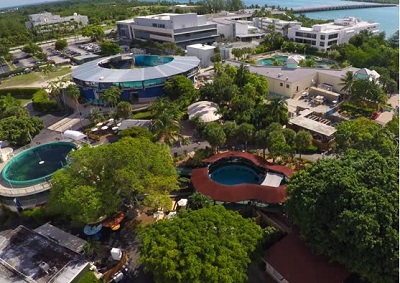The history of Virginia Key, a picturesque barrier island located just off the coast of Miami, Florida, is closely intertwined with the birth and evolution of the Miami Seaquarium. This remarkable piece of land has a rich and diverse history that encompasses Indigenous people, African American heritage, environmental conservation, and the development of a world-renowned marine park. In this blog post, we’ll take a journey through time to explore the captivating history of Virginia Key and the Miami Seaquarium.
Indigenous Peoples and Early Settlers:
Virginia Key has been inhabited for thousands of years, with Tequesta Indigenous people being the island’s original inhabitants. In the late 19th century, after the moving of Indigenous populations, settlers began to establish themselves on the island. During this period, the island was primarily used for farming and fishing.
Historic African American Beach:
In the 1940 to 1965, Virginia Key played a significant role in providing a recreational haven for African Americans in the Miami area. Virginia Key Beach Park, founded in the 1940s, became a popular destination for African American families to enjoy the beach, picnics, and cultural events. It was one of the few public spaces where African Americans could gather freely during a time of racial segregation.
The Birth of the Miami Seaquarium:
In 1955, Virginia Key took a significant turn in its history when the Miami Seaquarium was founded by Fred D. Coppock, an entertainment industry veteran. The Miami Seaquarium was the first major marine park of its kind in the southeastern United States. It quickly became a beloved attraction, captivating visitors with its dolphin and marine life shows, plus the Miami Swim with Dolphins program.
Flipper, the Iconic Dolphin:
One of the key figures in the Miami Seaquarium’s history is Flipper, the beloved bottlenose dolphin. Flipper, portrayed by multiple dolphins including Kathy, became an international symbol of marine entertainment and the bond between humans and dolphins. The iconic TV series “Flipper,” which aired from 1964 to 1967, brought fame and recognition to both the Miami Seaquarium and Virginia Key.
Conservation and Environmental Stewardship:
Throughout its history, the Miami Seaquarium has been committed to conservation and environmental stewardship. The park has been involved in marine animal rescue and rehabilitation efforts, particularly for injured and stranded sea turtles and manatees. Additionally, the Miami Seaquarium actively supports coral reef restoration projects and promotes marine conservation education.
Challenges and Redevelopment:
Virginia Key and the Miami Seaquarium have faced challenges over the years, including debates about the park’s impact on marine life. However, the park has made efforts to address these concerns and continues to adapt to evolving standards and practices in the field of marine mammal care and entertainment.
Virginia Key Today:
Virginia Key is no longer just a barrier island but a destination for both recreation and environmental conservation. In addition to the Miami Seaquarium, it is home to the Virginia Key Beach Park, various cultural and historical attractions, and a vibrant natural environment that includes protected coastal habitats and a network of trails.
Conclusion:
The history of Virginia Key, Miami, and the Miami Seaquarium is a story of transformation, from a haven for Indigenous peoples to a historic beach park for African Americans and the birthplace of a pioneering marine park. Through its evolution, Virginia Key and the Miami Seaquarium have come to symbolize the power of conservation, education, and entertainment to inspire a deeper appreciation for our natural world and the importance of protecting it for future generations.

